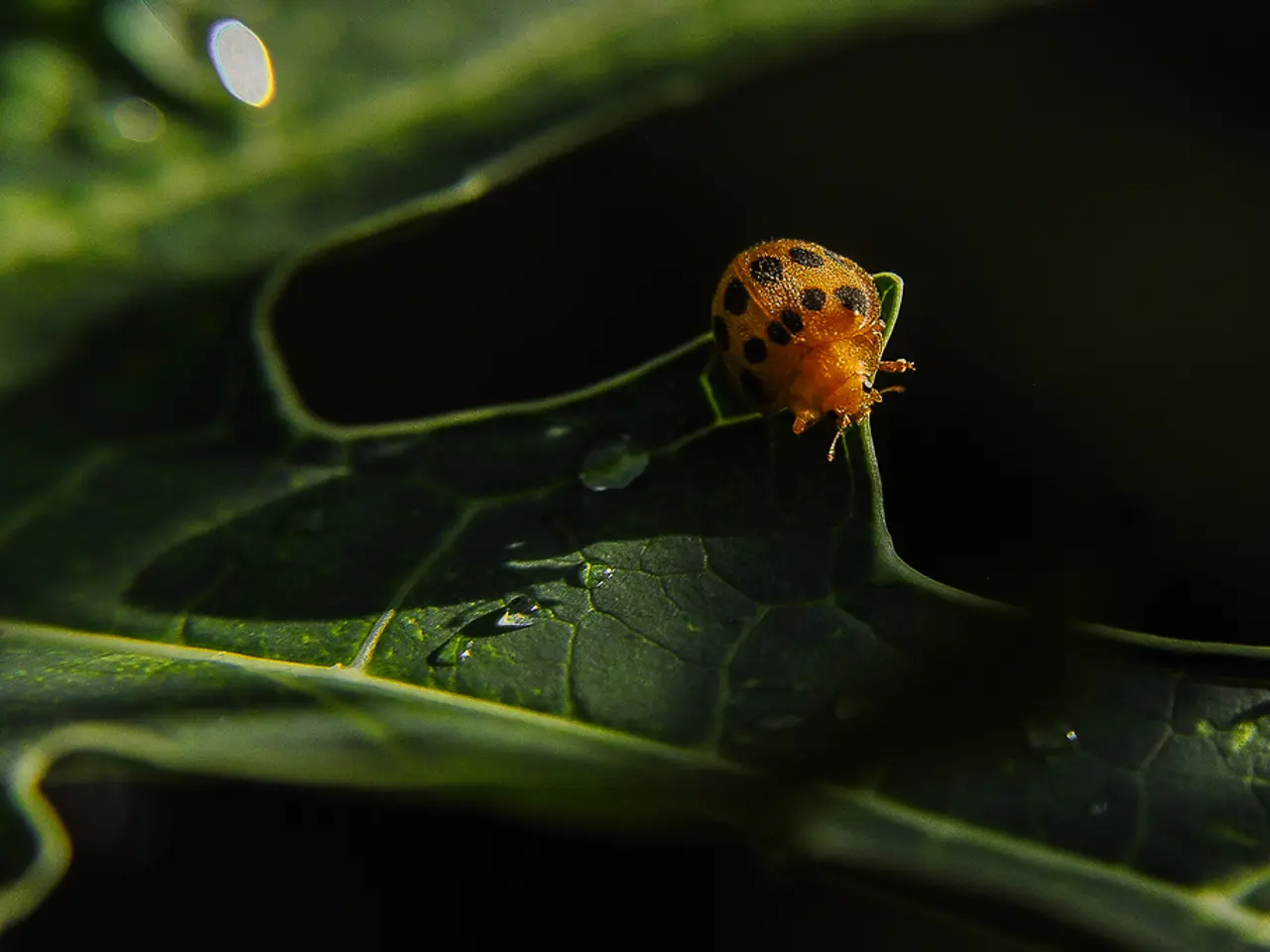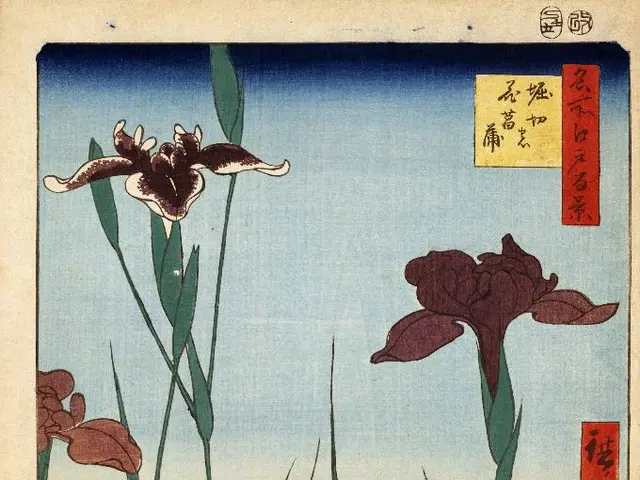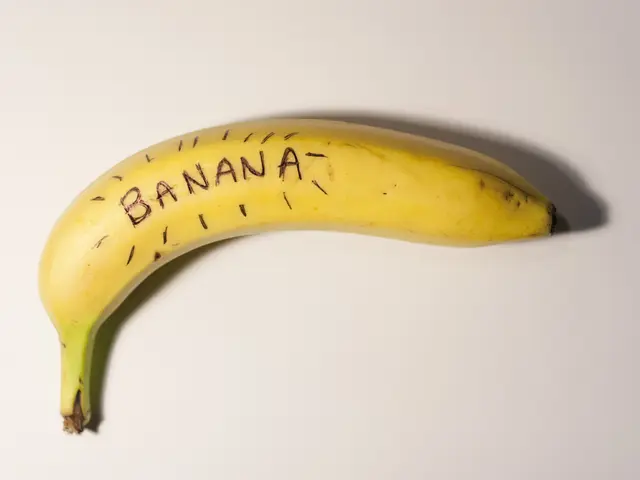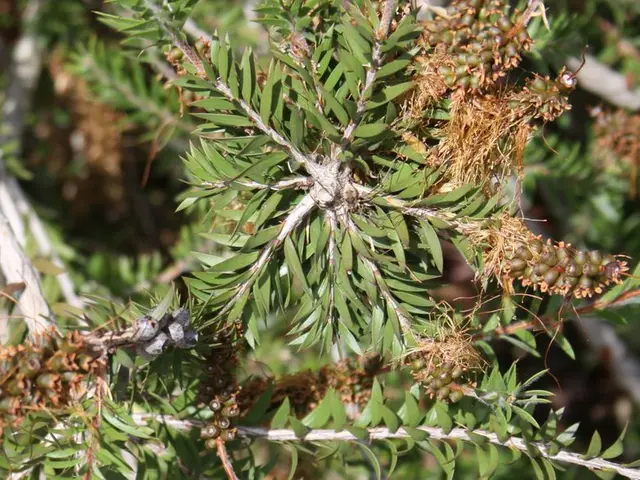Eggplant Leaves Turning Curled: Discover the Source and Simple Solution
Eggplants, with their rich flavour and versatile use in various dishes, are a popular choice among gardeners. However, issues such as leaf curling can arise, affecting the plant's health and productivity. This article aims to help gardeners identify the causes of eggplant leaf curling and provide solutions for treatment and prevention.
**Causes of Eggplant Leaf Curling**
1. **Insect Pests** - Common pests like the Colorado potato beetle and whiteflies can cause eggplant leaves to curl. Their damage response to these pests can lead to further problems if left unchecked.
2. **Viral Diseases** - Viruses such as the Yellow Leaf Curl Virus can cause symptoms including leaves yellowing, curling upward, becoming smaller, flower drop, and reduced fruit yield. These viruses are often spread by insect vectors like whiteflies.
3. **Soilborne Fungal Diseases** - Soilborne pathogens such as Fusarium wilt and Verticillium wilt can attack the plant’s vascular system, causing wilting and sometimes leaf curl or drooping. These pathogens persist in soil for years and are hard to manage once plants are infected.
4. **Environmental and Cultural Factors** - Heat stress or high temperatures can cause leaves to curl upward to reduce moisture loss. Improper planting depth, inconsistent watering, or poor soil conditions can also stress plants, leading to curled leaves. Application of oils or sulfur at high temperatures can harm plants and cause leaf damage, including curling.
**How to Identify the Cause**
- Examine leaves for insect pests like Colorado beetles or whiteflies. - Look for additional symptoms such as yellowing leaves, flower drop, or reduced fruit set to suggest viral infection. - Inspect roots for signs of rot or wilting to suspect soilborne pathogens. - Note environmental conditions: Is the weather very hot? Are there irrigation irregularities? - Check recent treatments for use of sulfur or oils during high temperatures.
**Treatment and Management**
| Cause | Treatment and Management | |------------------------------|--------------------------------------------------------------------------------| | **Insect pests** | Apply appropriate insecticides or organic controls; handpick beetles; use neem oil cautiously. Avoid oil sprays above 85°F[1][3]. | | **Viral diseases** | Remove and destroy infected plants; control whiteflies and other vectors; practice crop rotation; plant resistant varieties if available[2]. | | **Soilborne fungal wilts** | No cure once infected; prevent by using resistant varieties, crop rotation, and avoiding contaminated soil; remove and destroy infected plants[1]. | | **Heat/environmental stress**| Provide consistent watering; mulch to retain moisture; avoid applying oils or sulfur during high heat; improve soil health and planting practices[1]. |
**Additional Notes**
- Good cultural practices like proper spacing for air circulation, avoiding overhead watering to keep leaves dry, and regularly monitoring for pests can reduce problems. - Removal and destruction of affected plant parts help prevent spread of diseases such as leaf mold or viruses[2].
In summary, to address eggplant leaf curl, carefully inspect for pests and disease symptoms, consider environmental stresses, and apply targeted cultural and chemical controls accordingly. Prevention via good soil health, resistant varieties, and pest management is key, as some diseases like Fusarium wilt have no cure once established[1][2][3].
Eggplants require full sunlight and moderate temperatures to thrive, and any deviation from these conditions can cause stress and lead to curling leaves. Poor drainage, incorrect potting soil and container, improper watering schedule, and pest infestations can also contribute to leaf curling.
Gardeners can improve their eggplant cultivation by choosing the right potting mix, providing proper drainage, and considering companion crops such as cucumbers, lettuce, tomatoes, cabbage, potatoes, beans, marigolds, and nasturtium. These plants can deter pests, provide nutrient and mineral support, and reduce weeds around eggplants.
For those experiencing issues with eggplant leaf curling, it's essential to tackle plant virus, pests, and environmental stress promptly using methods such as isolating the eggplant, snipping away affected portions, spraying water, neem oil, or commercially available insecticides. Preventing plant viral and bacterial infections by using sterile soil, pot, or container and treating infections as soon as they are spotted is also crucial.
Glen, a gardening expert with over 15 years of experience in garden maintenance, design, and landscaping services, emphasizes the importance of understanding the causes of eggplant leaf curling and taking proactive steps to prevent and treat these issues.
In relation to gardening and home-and-garden activities, identifying the causes of eggplant leaf curling is crucial. This condition may be caused by insect pests like the Colorado potato beetle or whiteflies, viral diseases such as the Yellow Leaf Curl Virus, soilborne fungal diseases such as Fusarium wilt or Verticillium wilt, or environmental and cultural factors such as heat stress, improper planting depth, inconsistent watering, or application of oils or sulfur during high temperatures. To prevent and manage these issues, gardeners should apply appropriate insecticides or organic controls for insect pests, control whiteflies and other vectors for viral diseases, use resistant varieties, practice crop rotation, avoid contaminated soil, and maintain good cultural practices like proper spacing and monitoring for pests. Additionally, improvement in eggplant cultivation can be achieved by choosing the right potting mix, providing proper drainage, and considering companion crops.








